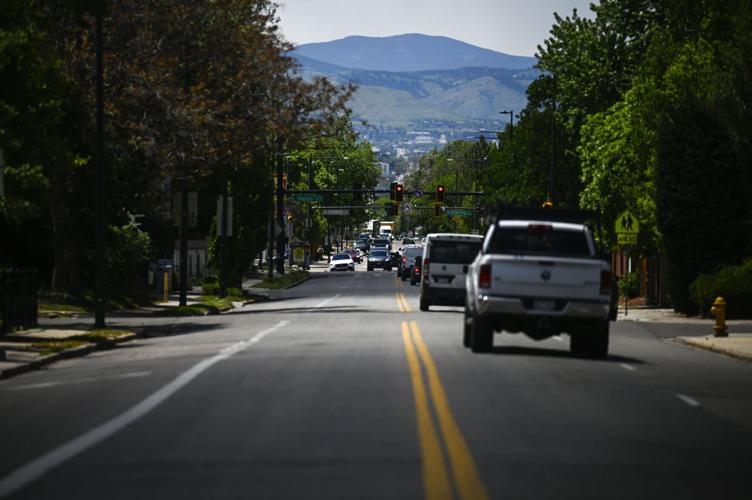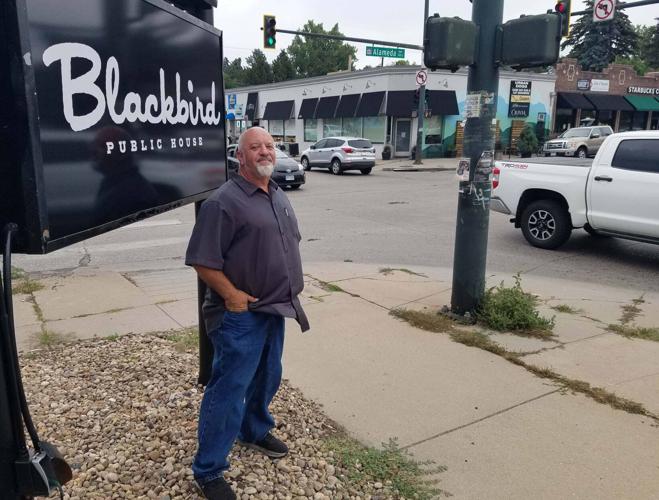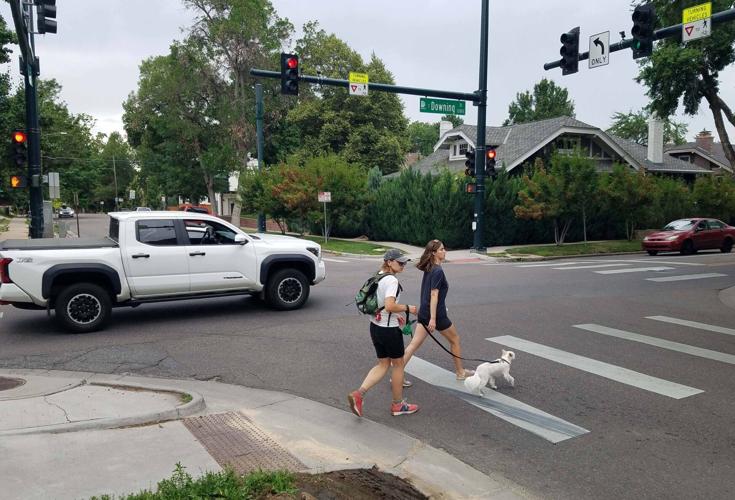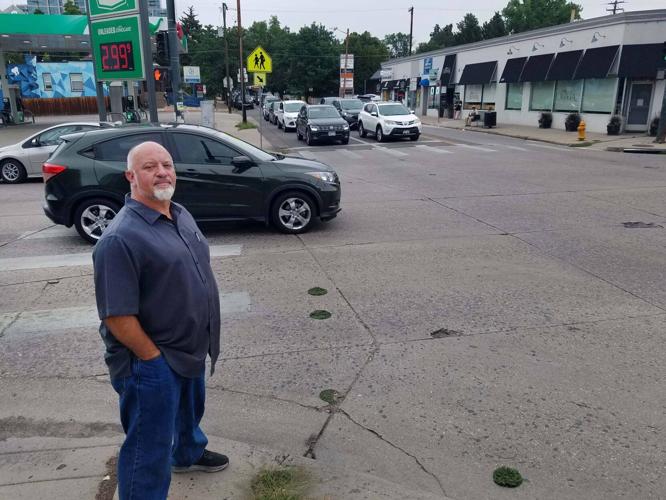Wash Park neighbors in uproar over Alameda ‘road-diet’ project in Denver
The City of Denver is readying a major slowdown and slimdown of vehicle traffic on East Alameda Avenue through a heavily traversed corridor north of Washington Park.
That’s set off an uproar among some neighbors, who say it will force cars and trucks onto their quieter side streets.
Representatives of Denver’s Department of Transportation and Infrastructure said they’ve already taken into account that some traffic could be diverted into Wash Park neighborhoods. Studies suggest that no more than 10% of vehicles would veer onto side streets, a DOTI representative said after a query from The Denver Gazette.
The East Alameda Lane Repurposing project will cut the current speed limit from 30 miles-per-hour to 25, while narrowing a 12-block stretch from south Logan Street east to south Franklin Street from four lanes of traffic to two. Repurposed lanes, according to plans, will create dedicated left-turn lanes, where drivers could make safer left turns, without feeling pressure from traffic backed up behind them.
But neighbors insist that even without the project, they’re already seeing backups on Alameda spilling into streets nearby, where cyclists and pedestrians headed for the park or an elementary school vie for safe space with rush-hour traffic.
“The project will almost certainly slow traffic on Alameda. But it will also force cars into surrounding neighborhoods, which is really dangerous,” said Kim Kolesar, who both lives in and operates a nearby Pilates studio in the neighborhood. “It’s kind of a nightmare.”
Neighbors send petition to mayor
Over recent weeks, Kolesar and other neighbors have formed an ad-hoc group, with a web site up, and sent a petition to Denver Mayor Mike Johnston they that said has already drawn 200 signatures. The plea begs for the mayor’s attention to aspects that could “create substantial and lasting negative impacts on traffic safety, neighborhood livability, and the vitality of local businesses.”
The temperature of the uproar was heightened, neighbors said, when a city engineer met with residents at the busy intersection of Alameda with south Downing Street — where Alameda traffic crosses with rush hour commuters coming out of downtown, or headed to the nearby school and park.
Neighbors recounted that the DOTI representative readily admitted that some traffic would divert onto east-west Cedar Street north of the Avenue, and onto east Virginia Avenue between Alameda and the park.
“Crossing Downing on Cedar at rush hour is already a hope and a prayer,” Kolesar told The Denver Gazette. “Downing is such a busy intersection that gets backed up — you have to be so careful about pedestrians and scooters.”
Meanwhile, shop and restaurant owners on nearby stretches of Alameda said they already see the effect of over congestion, as drivers cut out of traffic into their parking lots to steer around backed-up intersections.
Residents fear horns ‘blaring day and night’
“On our patio, you’re going to hear brakes screeching and horns blaring day and night,” speculated Garrett Ladd, owner of Blackbird Public House, with a classic American menu at the corner of Alameda and Downing.
“People are driving through my parking lot and cutting through the gas station’s — because they don’t want to wait,” Ladd told a Denver Gazette reporter at the intersection.
“There’s horrible congestion that’s backing up for blocks, and construction will be a nightmare,” he said.
Ladd voiced another argument from the opposition to the project — that slimming down traffic will be bad for business.
Noting that he serves on the board of the Colorado Restaurant Association, Ladd said the project arrives at a moment when restaurants are struggling with city construction altering flows along boulevards. He cited construction underway on East Colfax Avenue as Exhibit A.
“The association is losing six restaurants a week,” he said.
His own business on Alameda remains off by 50% since the COVID pandemic. Drive-by traffic is crucial, he said, noting he fears being shuttered if it drops off.
Safety concerns
“The minute we start making it less easy to get here, we’re going to lose that,” Ladd said. “They’ll avoid this part of town. Humans don’t hunt out places, they go where they feel comfortable.”
Both the neighbors and the city insisted that their primary motivations concerning the east Alameda project are about safety.
DOTI’s statement to The Denver Gazette cited ongoing concerns about crashes along the stretch that have been studied over the past five years. Those showed 255 crashes, up from the 192 tallied from 2018 through 2022.
DOTI officials cited a specific “crash analysis” showing some 44 wrecks along a mile-long stretch during the pandemic years of 2021 and 2022. Most of those were rear-end and failure-to-yield crashes. Accident totals, according to the analysis, were marginally higher than expected at Grant, Washington, Clarkson, Emerson and Downing Streets.
The plan calls for westbound Alameda to have a protected left turn at south Pennsylvania Street —and for another 10 protected left turns along 10 blocks from Pearl to Franklin Streets. Left turns are not allowed from Alameda onto Downing or Marion, either currently or after the changes.
“Our plan is to move forward with safety improvements on Alameda Avenue, making the corridor safer for all users,” a DOTI spokesperson said.
The repurposing would create some added features, including the following: painted pedestrian bulb outs at 11 intersections between Pearl and Franklin; striped medians and pedestrian refuge islands at Washington, Emerson Downing, Marion, and Corona Streets; a flashing beacon and marked crosswalks at Franklin; and school zone signage along three sections east of Broadway.
DOTI noted that the start date for the project, originally to be this summer, has yet to be set.
Speeding along that stretch is crucial to implementing a plan, DOTI said. In 2024, according to the analysis, typical speeds were closer to 38 miles-per-hour than to the posted limit of 30.
A similar project in 2008
The Denver Gazette pressed for how this project would differ from a similar lane reduction the city had carried out and later dropped along the same stretch from 2008 to 2010.
DOTI’s statement noted that, indeed, there had been a “stacking of vehicles on the eastbound approach to Downing Street with one lane fully queued and the other lane free flowing.”
Average traffic on Alameda at that time, it said, was in excess of 20,000 vehicles per day.
“What would be different now is that the average daily traffic is much lower,” the department said. “Alameda is a better candidate now for a lane reduction.”
As for neighbors’ worries about traffic being diverted into the quieter neighborhood, DOTI said: “2024 counts showed the average daily traffic volumes of Alameda Ave, west of Downing, to (now) be around 14,800 vehicles per day.”
“DOTI believes no more than 10% of vehicles total will reroute to side streets throughout the day. A diversion analysis conducted for Virginia Avenue predicts approximately 490 additional vehicles per day, which translates to about 1-2 vehicles per minute,” the agency added.
‘A bad deal’
All of that is doing little to assuage concerns of some residents who routinely use the side streets north of Alameda and south around the park.
“It’s a bad deal,” said Del Van Gilder, who lives off Alameda close to the park. “People aren’t going to stop using Alameda because of that.”
Van Gilder is another local who brought up the subject of DOTI’s project along east Colfax, in the context of a worst-case scenario of how the area might be affected.
“It will be putting people out of business,” he said. “It’s hard to get into a restaurant at Downing because of the traffic.”
“There are (already) some days that it’s so backed up on Virginia (Avenue) that you have to take side streets to get to Lincoln,” added a parent who makes morning school runs from the neighborhood. The parent asked not to be identified.
All of the residents who spoke to The Denver Gazette raised another point — that despite the agency’s assertions that it has consistently discussed the project with the community, none was aware of the impending move before being alerted by neighbors.
“It doesn’t make any sense,” the parent continued. “You have three major schools in proximity, and traffic on Louisiana (south of the park) is already backed up. You would assume you would figure out a way to communicate more.”










